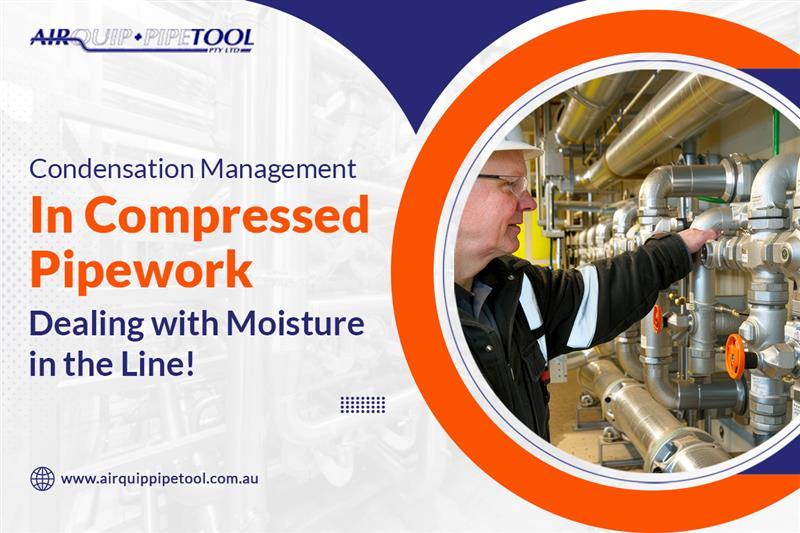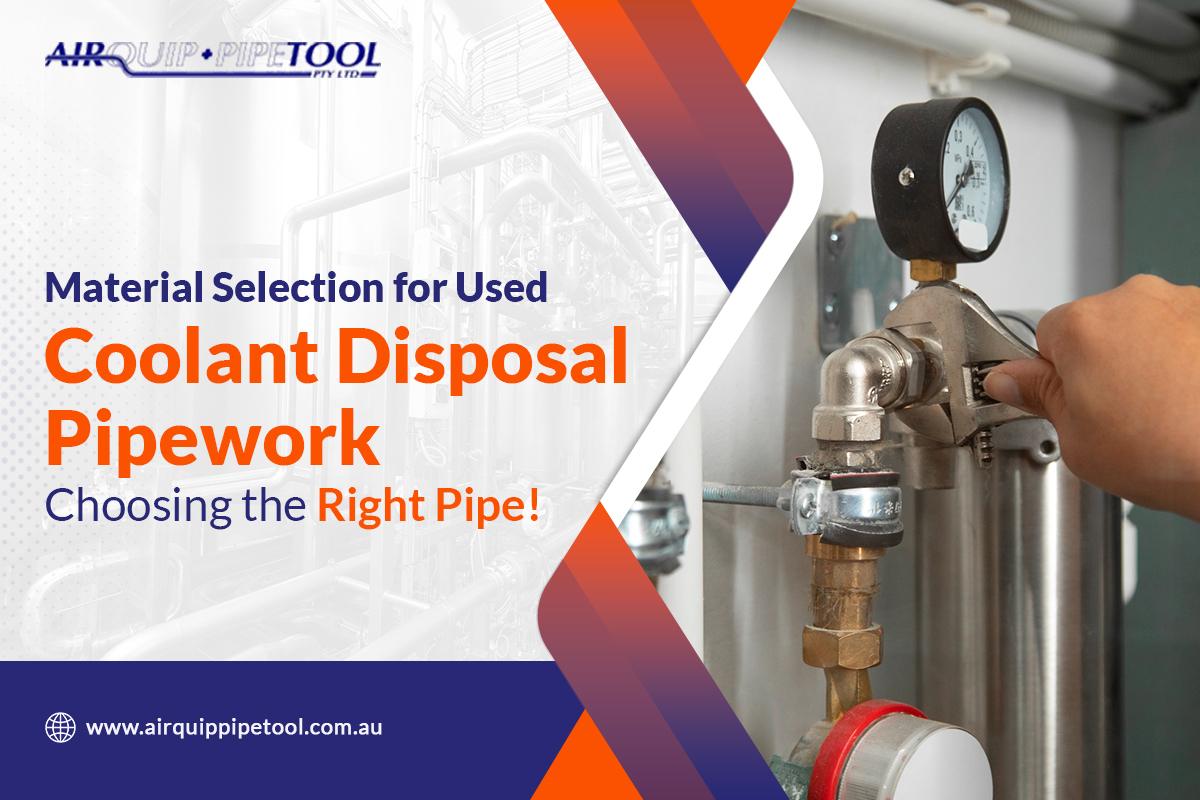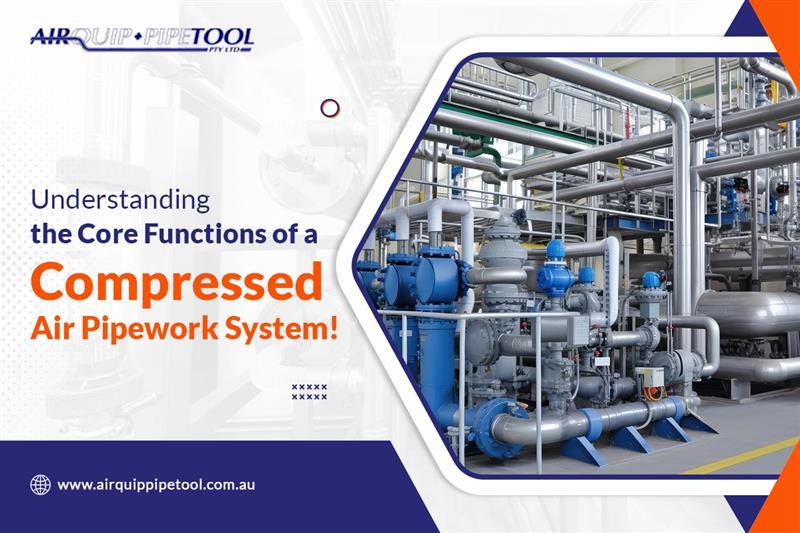- by airquippipetool
- . 19 Nov 2025
Pressure Drop In Compressed Air Reticulation Systems: Causes, Consequences & How to Minimise It?
Compressed air fittings comprise parts such as elbows, tees, and connectors that securely connect pipes, tubes, and hoses in a pneumatic network. On the other hand, compressed air pipework controllers are machines that manage the operation of the air compressor and the airflow inside a system. Ensure the proper airflow of any compressed system. Pipes carry the airflow, and the fittings, regulators, gauges, valves, and lubricators ensure the system remains safe, efficient, and consistent.
Let’s understand in detail the key components of compressed air installation and why they matter for performance and longevity.
Compressed air controls are the brain of the system, managing both airflow and pressure. These controls keep operations safe, energy-efficient, and tailored to the needs of different tools or processes.
Without reliable controls, systems face pressure drops, energy waste, and premature wear of tools and machinery. Hence, it is important to opt for better quality, durable, and effective controls in compressed air pipes and fittings.
Some of the major air compressed controls include-
A pressure gauge measures the air pressure inside the system and provides operators with a real-time reading. By showing whether the pressure is too high or too low, gauges help prevent equipment damage, pressure drops, and unsafe conditions. They’re essential for monitoring system performance at a glance.
Regulators reduce high-pressure air coming from the compressor to a consistent, usable level for specific applications. For example, one tool may require 90 PSI, while another might only need 50 PSI. Regulators ensure each tool gets exactly what it needs without risking damage or wasting energy.
Valves control the direction and flow of compressed air. They allow users to open or close sections of the system for repairs or rerouting without shutting everything down. This makes maintenance faster and prevents unnecessary downtime.
Pneumatic tools often need lubrication to reduce friction and wear. Lubricators automatically add a controlled amount of oil to the compressed air, protecting moving parts and extending tool life. This reduces manual maintenance and ensures smoother operation.
Compressed air fittings are the connectors that hold the entire compressed air pipe system together. They determine how flexible and leak-proof the compressed air system will be.
Compressed air pipework fitting includes-
These are the joints that allow quick connection and disconnection between hoses, pipes, or tools. They create a sealed link that prevents leaks, while also giving operators the flexibility to swap tools or expand the system with minimal effort.
Tees split the airflow into two directions, while elbows redirect it around corners. Both are vital for routing compressed air through complex layouts without losing pressure or efficiency. They make it possible to deliver air exactly where needed, even in tight workshop spaces.
Sometimes the system requires different pipe sizes. Reducers make that possible by transitioning airflow smoothly between large and small pipes. This ensures consistent pressure and prevents turbulence that can cause wear or inefficiency.
Alongside fittings and controls, a few other components are critical to building a system that is safe, durable, and adaptable.
Connectors are used when joining different materials or pipe types, such as compressed air pipe and fittings of varying diameters. They guarantee airtight joints that maintain airflow without leaks.
Elbows are curved pipe sections that redirect airflow at specific angles—commonly 90° or 45°. They allow compressed air to move smoothly around corners without creating sharp bends that would restrict flow or increase pressure loss.
Hose reels provide flexible access to compressed air for tools across the workshop. They keep hoses organized, reduce trip hazards, and protect the hoses from wear and tear, improving workplace safety and efficiency.
When pipes expand or contract due to temperature changes, expansion loops absorb the movement. Without them, rigid piping could crack, warp, or disconnect over time. Loops add resilience and extend the lifespan of the system.
For businesses in Adelaide, Airquip & Pipetool Pty Ltd provides expert compressed air pipe installation and supply of fittings and controls. Airquip and Pipetool Pty Ltd combine industry expertise with high-quality components to build systems that are efficient, durable, and compliant with safety standards.
When you choose us, you’re choosing a partner who ensures your compressed air pipe work operates at its best—whether in a small workshop or a large industrial plant.
 " alt="">
" alt="">Pressure Drop In Compressed Air Reticulation Systems: Causes, Consequences & How to Minimise It?
 " alt="">
" alt="">Material Selection for Used Coolant Disposal Pipework: Choosing the Right Pipe!
 " alt="">
" alt="">Understanding the Core Functions of a Compressed Air Pipework System!

An efficient industrial air network is about ensuring steady pressure, minimal energy loss and reliable performance from the first compressor discharge to the tool on the line. With well-designed compressed […]

The materials used in coolant disposal pipework are the main factor. So, industries need to understand what material- HDPE, Aluminium, or Stainless Steel (316L) works best for their conditions. Airquip […]

The main gases in compressed air are nitrogen (78%) and oxygen (21%). Compressed air molecules are small and possess kinetic energy, enabling them to travel at a higher speed. Also, […]
Copyright © 2025 airquippipetool | All rights reserved